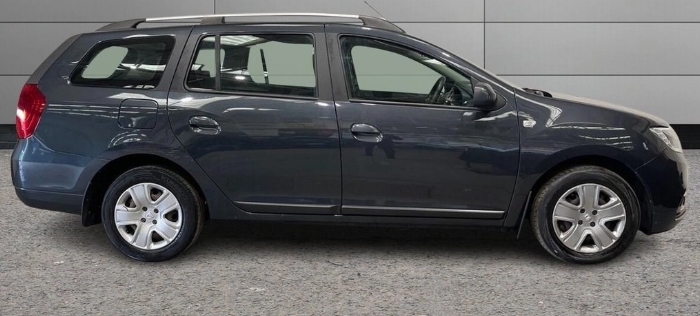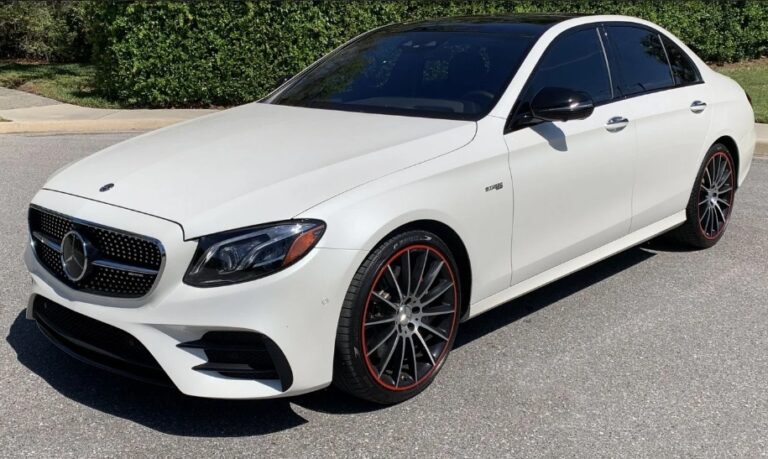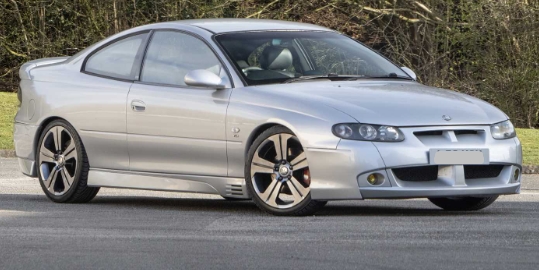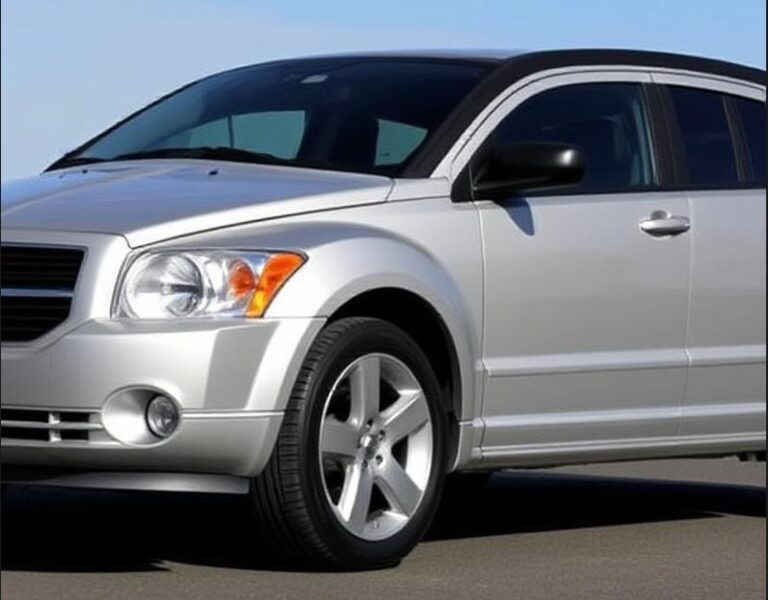Nissan’s Versatile Family Hauler: A Deep Dive into the Nissan Lafesta’s History
In the highly competitive Japanese domestic market (JDM) of the early 2000s, the minivan, or “MPV” (Multi-Purpose Vehicle), was king. Families demanded vehicles that blended space, utility, and fuel efficiency into a single, smartly-packaged machine. While Nissan had its flagship Serena minivan, it needed a contender in the more compact, stylish segment to challenge rivals like the Toyota Wish and Honda Stream. The answer arrived in 2004 with the Nissan Lafesta, a name derived from the Italian word for “holiday” or “festival,” perfectly encapsulating its purpose as a vehicle for family enjoyment.
The Lafesta’s story, however, is not one of linear progression. It is a tale of two distinct generations, each defined by a completely different philosophy: the first, a pure Nissan innovation brimming with unique features, and the second, a product of a strategic OEM partnership that prioritized efficiency over originality. This article explores the complete evolution of the Nissan Lafesta, from its ambitious beginnings to its pragmatic conclusion.
First Generation (B30): A Nissan Original (2004-2012)
Launch and Concept
The first-generation Nissan Lafesta, designated the B30 chassis, was officially launched in Japan on December 2, 2004. It was designed as a spiritual successor to the Nissan Prairie/Liberty, but with a renewed focus on modern design, comfort, and a driving experience that felt more car-like than van-like. Built on the Renault-Nissan Alliance C platform—shared with vehicles like the Sentra and Qashqai—the Lafesta boasted a stable and comfortable ride.
Its primary design objective was to create a sense of openness and light. This was spectacularly achieved through its most defining feature: the “Super Glass Roof.” This massive panoramic sunroof spanned almost the entire length of the cabin, measuring an impressive 1,500 mm long by 800 mm wide. It was made of heat- and UV-absorbing glass and featured an electronic sunshade, allowing occupants to flood the interior with natural light at the touch of a button. This single feature set the Lafesta apart from its competitors and became its core marketing appeal, promising a more uplifting and enjoyable journey for all seven passengers.
The interior was designed for maximum flexibility. The seating was arranged in a 2-3-2 configuration, with second-row seats that could slide, recline, and fold flat. The third-row seats could be easily stowed away to create a large, flat cargo area, making the Lafesta a highly practical vehicle for both carrying passengers and hauling gear.
.
THIS is GOOD stuff if your car is in need:

.
Powertrain and Drivetrain
Under the bonnet, the Lafesta B30 was exclusively powered by Nissan’s reliable MR20DE 2.0-liter inline four-cylinder engine. This DOHC engine produced a respectable 137 PS (101 kW) and 200 Nm of torque. It was paired exclusively with Nissan’s Xtronic Continuously Variable Transmission (CVT), a choice that prioritized smooth acceleration and fuel efficiency over sporty performance. The gear selector was unconventionally mounted on the dashboard, freeing up floor space between the front seats for a walk-through cabin. The Lafesta was offered in both front-wheel drive (FWD) and a 4WD configuration, the latter providing extra stability in snowy or slippery conditions.
Trim Levels and Updates
Throughout its eight-year production run, the B30 Lafesta was available in a variety of trim levels designed to cater to different tastes and budgets.
- Initial Launch Models (2004-2007):
- 20S: The entry-level model. It came with the essentials, including automatic air conditioning, power windows, and the standard seating configuration. It typically featured steel wheels with hubcaps and a more basic interior fabric.
- 20G: The premium trim level. The 20G added luxury features such as 15-inch alloy wheels, an intelligent key with keyless entry and push-button start, steering wheel-mounted audio controls, and higher-grade interior materials. The panoramic roof was often standard on this trim.
- Rider: Produced by Nissan’s subsidiary, Autech, the Rider was the sporty and customized version. It featured a unique chrome grille, an aggressive front bumper, side skirts, a rear spoiler, and larger, polished alloy wheels. The interior often received special trim details, including leather-wrapped steering wheels and unique seat fabrics. The Rider was aimed at buyers who wanted minivan practicality with a more distinct, performance-oriented look.
- Playful: A special edition that offered a more casual, fun aesthetic with unique interior colors and exterior accents, slotting between the 20S and 20G.
- Mid-Cycle Facelift (2007): In May 2007, the Lafesta received a significant facelift. The front end was redesigned with a new grille and bumper, and the headlights and taillights were refreshed for a more modern appearance. The most important change, however, was in the trim lineup.
- Highway Star: The “Playful” trim was discontinued and replaced by the Highway Star, a nameplate synonymous with Nissan’s sportier minivans. The Highway Star effectively merged the sporty appeal of the Rider with the mainstream market. It featured an exclusive aerodynamic body kit, a dark chrome grille, unique alloy wheels, and a black-themed interior, projecting a more aggressive and premium image. It quickly became the most popular trim level and the face of the Lafesta for the remainder of the B30’s life. The existing 20S and 20G trims were retained but took a backseat in marketing.
The B30 Lafesta was a solid and well-regarded vehicle, praised for its innovative roof, comfortable ride, and practical interior. However, as the market evolved towards minivans with sliding doors, the Lafesta’s conventional hinged rear doors began to feel dated. Nissan, facing the high cost of developing an all-new platform, looked to a partner for its next-generation model.
Second Generation (B35): A Mazda Partnership (2011-2018)
A New Direction
In June 2011, Nissan launched the second-generation Lafesta. In a move that surprised many, it was not an in-house Nissan design. Instead, the new Lafesta, designated the B35, was an OEM-supplied vehicle based entirely on the third-generation Mazda Premacy (known internationally as the Mazda5). The vehicle was officially named the Lafesta Highway Star, signaling a permanent shift to a sportier brand identity and dropping the standard, non-aerodynamic models.
This strategic partnership allowed Nissan to maintain a presence in the compact minivan segment without incurring massive development costs, while Mazda benefited from increased production volume at its factory.
The core differences between the Lafesta Highway Star and the Mazda Premacy were purely cosmetic. Nissan replaced Mazda’s “smiling” front fascia with its own signature “V-motion” style grille and a more angular front bumper, bringing the vehicle’s look in line with other Nissan models of the era. Badging was, of course, updated to Nissan logos, and unique wheel designs were offered. From the A-pillar back, including the distinctive “Nagare” wave-like character lines on the side panels, the vehicle was identical to its Mazda twin.
Crucially, the B35 adopted the Premacy’s key features: dual power-sliding rear doors, a feature the original Lafesta lacked and which was now considered essential in the family minivan market. However, it lost the B30’s signature panoramic roof, a trade-off for the more practical sliding doors.
Powertrain and Technology
The powertrain was also sourced directly from Mazda.
- Initially, the FWD models were equipped with Mazda’s MZR 2.0L DISI (Direct Injection Spark Ignition) engine, paired with a 5-speed automatic transmission.
- The 4WD models used a less advanced standard MZR 2.0L engine mated to a 4-speed automatic transmission.
- A major update arrived in 2013 when the FWD models were upgraded with Mazda’s groundbreaking Skyactiv-G 2.0 engine and Skyactiv-Drive 6-speed automatic transmission. This combination, along with Nissan’s adoption of Mazda’s “i-stop” idle stop-start system, dramatically improved fuel efficiency, making the Lafesta one of the most economical vehicles in its class.
Trim Levels
The trim structure for the B35 was simplified, reflecting its focus on the Highway Star persona.
- Highway Star: This served as the base model for the new generation. It came well-equipped with power sliding doors (often one-sided as standard, with dual as an option), automatic air conditioning, and 16-inch alloy wheels.
- Highway Star G: The top-tier trim. The “G” added premium features such as standard dual power sliding doors, xenon headlights, larger 17-inch alloy wheels, cruise control, and improved interior finishes.
- Highway Star J Package: Introduced later in its life cycle, the J Package was a more affordable, de-contented version of the Highway Star. It was designed to attract budget-conscious buyers and often came with 15-inch wheels and fewer standard convenience features.
Discontinuation and Legacy
The Nissan Lafesta B35 continued to sell steadily for several years, benefiting from the strong reputation of its Mazda underpinnings and Nissan’s extensive dealer network. However, by the mid-2010s, the entire minivan market in Japan began to shrink as consumer preference shifted decisively towards SUVs and crossovers.
Production of the Lafesta Highway Star ceased in March 2018. Nissan chose not to replace it, instead focusing its family vehicle efforts on the larger and more successful Serena.
The legacy of the Nissan Lafesta is a fascinating case study in automotive evolution and corporate strategy. The first-generation B30 stands as a testament to Nissan’s in-house innovation—a vehicle defined by its bold, experience-enhancing panoramic roof. The second-generation B35 represents a more pragmatic era of badge engineering, where market practicality and cost-efficiency took precedence. Together, the two generations tell the story of a versatile family hauler that adapted to a changing world, first with light and openness, and then with the quiet competence of a proven platform. While it may not be the most famous name in Nissan’s history, the Lafesta played its part perfectly during its time on the road, creating countless “holidays” for families across Japan.







